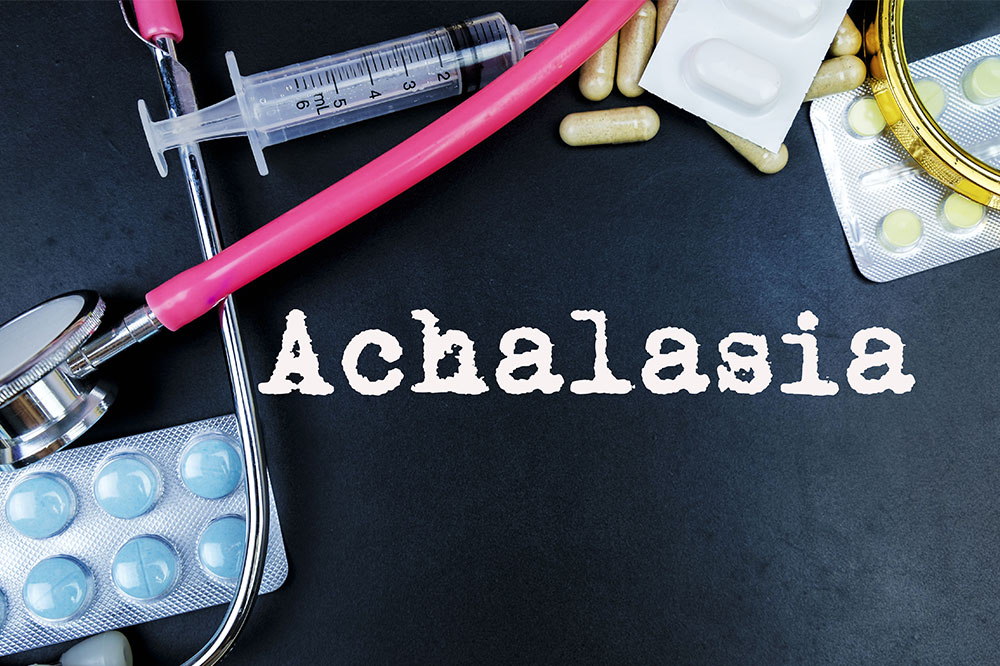
Achalasia – Symptoms, causes, and management
Achalasia is a rare and chronic disorder that affects the ability of the esophagus to move food to the stomach. The esophagus is a muscular tube that carries food and fluids from the throat to the stomach. Due to achalasia , the muscles of the esophagus and the lower esophageal sphincter (LES) do not work properly, causing difficulty swallowing and regurgitation of food. Keep reading to learn about what causes achalasia and how to manage it.
Causes
The exact cause of achalasia is yet to be ascertained, but researchers believe it happens when the nerves in the esophagus are damaged due to an autoimmune response or a viral infection.
Some experts believe achalasia may be hereditary, meaning it may run in families. The genetic component of the condition may therefore be present; however, no specific genes have yet been identified as being involved in achalasia .
Various autoimmune diseases, including Sjogren’s syndrome and systemic sclerosis, environmental toxins, and radiation therapy, may contribute to developing achalasia . Achalasia may also be affected by psychological factors, such as stress and anxiety, although studies are yet to confirm this.
Symptoms
Individuals may experience different symptoms of achalasia, which may develop slowly or suddenly. A common sign of achalasia is difficulty swallowing (dysphagia), which can affect solid and liquid foods. In addition to heartburn, chest pain, and body mass loss, people with achalasia may also experience regurgitation of food.
The dysphagia associated with achalasia is typically progressive and worsens over time. People with achalasia may need to drink liquids with meals or eat softer foods to swallow comfortably. It is also possible that they experience a feeling of food getting stuck in their chests or throats.
Food is regurgitated into the esophagus when the lower esophageal sphincter (LES) fails to relax and open properly. Aspiration pneumonia occurs when food or liquid stuck in the esophagus is inhaled into the lungs, causing life-threatening complications.
Chest pain in achalasia is often described as a squeezing or pressure-like feeling and may be mistaken for heart-related chest pain. It is more common for chest pain in achalasia to occur during or after meals than during physical activity.
When the LES fails to relax properly, achalasia causes heartburn by backing up stomach acid into the esophagus. Symptoms include a burning sensation in the throat and chest, which may worsen during meals or sleep.
As a result of swallowing difficulty and reduced appetite, people with achalasia may lose body mass without trying. It is possible to develop malnutrition over time as the body mass loss becomes more severe. Some people with achalasia can avoid eating altogether, which may worsen their symptoms.
Types of achalasia
Depending on the location and severity of the muscle dysfunction in the esophagus, achalasia can be classified into three types.
Type I achalasia (Classic achalasia)
In classic achalasia, there is no peristalsis – the normal coordinated movement of the muscles in the esophagus that pushes food and liquids into the stomach. The lower esophageal sphincter (LES) also fails to relax properly, causing difficulty swallowing and regurgitation.
Type II achalasia
It is one of the most common types of the condition and shows more severe symptoms than type I achalasia. A high degree of pressure in the lower esophagus can make it compressed. The result can be difficulty swallowing, chest pain, and regurgitation of food.
Type III achalasia
Type III achalasia is the rarest form of the disorder, which accounts for less than 10% of all cases. This type causes rapid, uncoordinated contractions of the esophagus due to increased muscle activity. The result can be difficulty swallowing, chest pain, and regurgitation.
Treatment
Achalasia can be treated in various ways depending on the condition’s severity and the patient’s overall health. The symptoms of mild cases may not require treatment; nutritional changes and prescription remedies can manage them. If the condition is more severe, treatment may be necessary to improve the quality of life and prevent complications.
Pneumatic dilation involves using a balloon to widen the LES so food can pass through more easily. Surgical myotomy allows food to pass through the LES more easily by cutting the muscles.
Prevention
There is no proven way to prevent achalasia, but lifestyle changes can reduce one’s risk of developing the condition. Health experts advise avoiding poor lifestyle habits, maintaining a healthy body mass, and following a low-fat, high-fiber meal plan.
Achalasia has no cure, but several treatments are available to manage its symptoms. Prescriptions to relax the LES, treatments for paralyzing the muscles of the lower esophageal sphincter, pneumatic dilation to stretch the LES muscles, and surgery to remove or alter the LES are some examples.
To develop an individualized treatment plan that addresses the symptoms, patients with achalasia should work closely with their healthcare providers. Many people with achalasia can successfully manage their symptoms and maintain a good quality of life with the help of early diagnosis and timely treatment.




